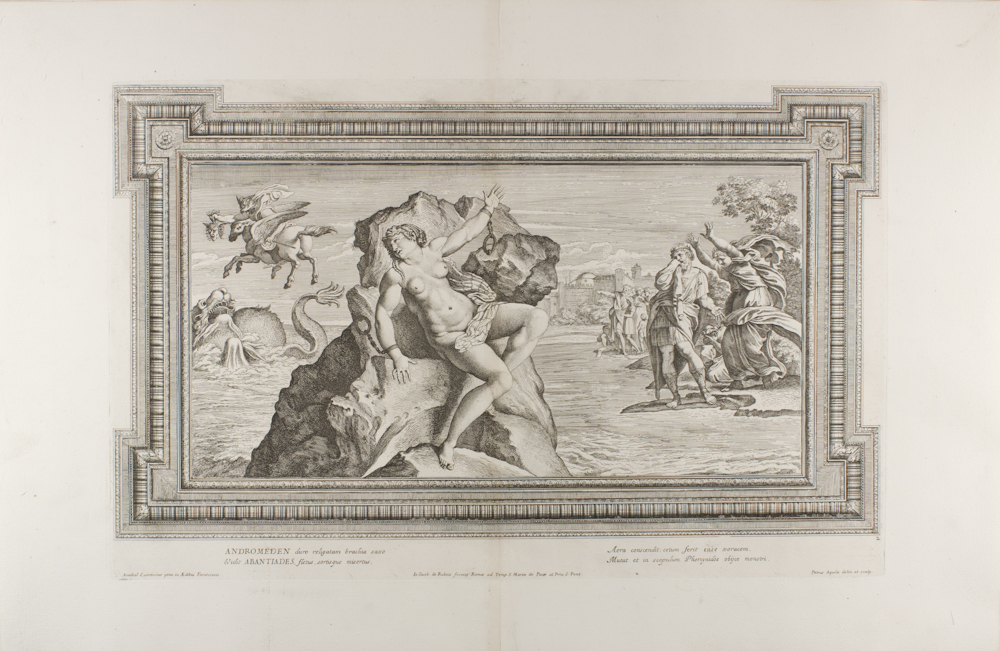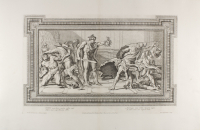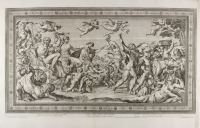After Annibale Carracci's paintings in the Farnese Gallery, Rome. 21 engravings, title page, and 3 dedicatory pages

Pietro Aquila, Perseus and Andromeda, Plate 2 from Galariae Farnesianae Icones, 1674, etching with engraving on paper, Gift of the Portland Art Association Library, public domain, 77.59.2b


This work is not currently on view.
- Title
After Annibale Carracci's paintings in the Farnese Gallery, Rome. 21 engravings, title page, and 3 dedicatory pages
- Artist
- Related People
- Date
1674
- Medium
etchings with engraving on paper, bound in a hardcover book
- Dimensions (H x W x D)
sheet: 18 11/16 in x 28 3/16 in
- Inscriptions & Markings
signature/maker's mark: lower left, Annibal Carraccius pinx in Aedibus Farnesianis; lower right, Petrus Aquila delin. et sculp.
inscription: inscribed frontispiece
- Collection Area
Graphic Arts
- Category
Books, Portfolios, and Manuscripts
Prints
- Object Type
intaglio print
- Culture
Italian
- Credit Line
Gift of the Portland Art Association Library
- Accession Number
77.59.2A-U
- Copyright
public domain
- Terms
Triumph of Bacchus and Ariadne, Plate 12 of Galeriae Farnesianae Icones, 77.59.2l At the turn of the sixteenth century, Italian painter Annibale Carracci produced a great series of mythological subjects to adorn the vault in the Gallery of the Farnese Palace in Rome (1597-1604). The series celebrates the indomitable power of love, and many printmakers made reproductive prints of the paintings (that is, prints that faithfully reproduce Carracci's imagery). The talented Sicilian printmaker Pietro Aquila made etchings of the compositions, which Giovanni Giacomo de'Rossi published in Rome. In this lively scene, nymphs and satyrs cheer the procession of Bacchus and his bride, Ariadne, traveling to their marital bed.
Perseus and Phineus, Plate 4 of Galeriae Farnesianae Icones, 77.59.2d This composition tells of the battle of Phineus and Perseus over the princess Andromeda. Phineus was engaged to Andromeda, but when Perseus killed Medusa, the snake-haired Gorgon, he won Andromeda's hand. Outraged, Phineus attempted to kill Perseus at the wedding, but Perseus fought him off by revealing Medusa's head, which turned everyone who gazed upon it to stone.
Perseus and Andromeda, Plate 2 of Galeriae Farnesianae Icones, 77.59.2b In this dramatic scene, Perseus swoops down to rescue Andromeda, while her family despairs on the shore. Cepheus, the princess's own father, had chained her to a rock to be eaten by the sea monster Cetus as a sacrifice to the gods to save his kingdom.









